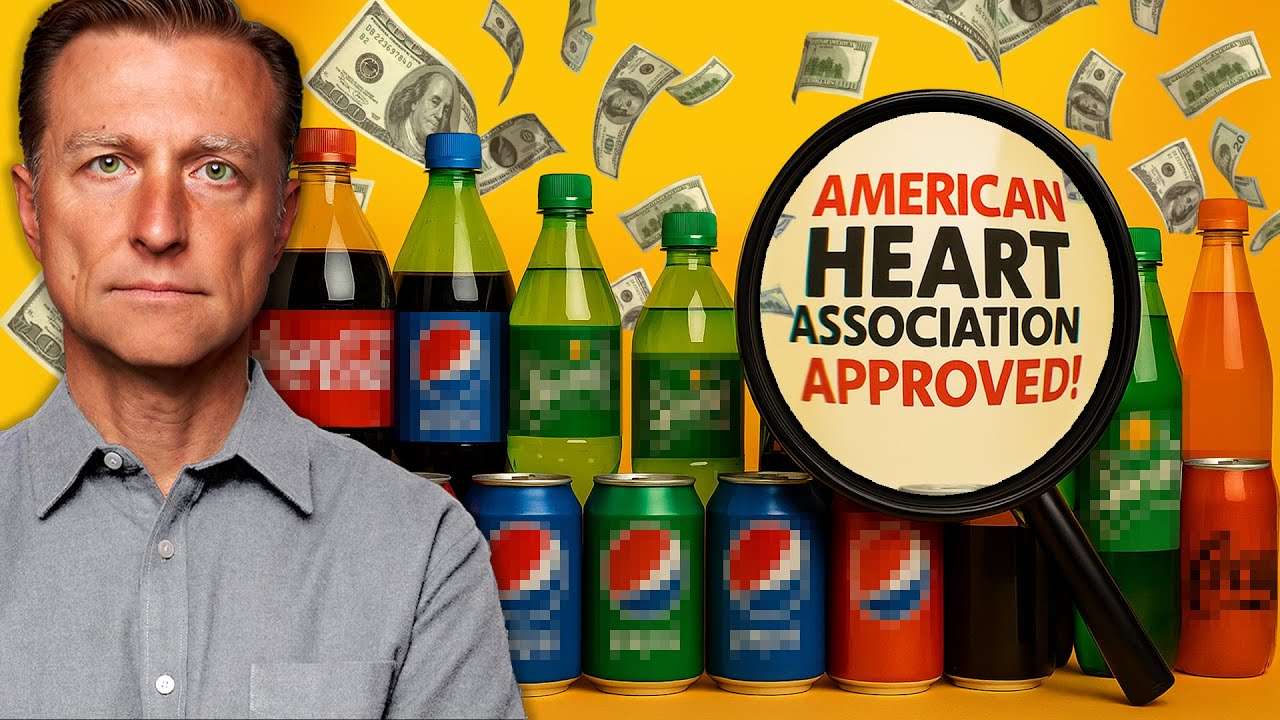The Supplemental Nutrition Assistance Program (SNAP), also known as food stamps, was originally created to fight hunger and support low-income families. Over the years, however, the program has been pulled into a growing conflict—one where the interests of public health clash with the influence of the processed food and pharmaceutical industries.
One recent event made this tension shockingly clear. The American Heart Association (AHA) publicly opposed a bill in Texas. That bill aimed to restrict SNAP purchases of soda, candy, and ultra-processed snacks. Most people expected the AHA to support it. After all, they promote heart health. But instead, they stood in the way of reform.

Why Limiting Junk Food in SNAP Matters
This bill didn’t seek to eliminate food support. Instead, it focused on improving food quality. Lawmakers hoped to redirect SNAP dollars toward healthier, whole foods—things like vegetables, lean protein, whole grains, and legumes.
The need for this is urgent. Soda remains the number one item purchased with SNAP benefits. Each year, taxpayers unintentionally spend $10 billion on sugary drinks through the program. These beverages are well-known drivers of obesity, type 2 diabetes, fatty liver disease, and heart disease.
More importantly, poor nutrition creates a cascade of medical problems. These often require expensive medications that are prescribed for life. As a result, public health costs rise, and families suffer while big industries profit.

The AHA’s Conflicted Position
So why would a heart-health organization object to nutrition-focused reform?
The answer lies in financial ties. The AHA receives funding from several large corporations, including major food manufacturers and pharmaceutical companies. Through its Industry Nutrition Forum, it partners with brands like PepsiCo and General Mills—companies that rely heavily on selling processed foods.
These partnerships raise serious questions. For instance, some sugary cereals still carry the AHA’s “Heart Healthy” seal. While these products might contain whole grains, they also include high amounts of added sugar and corn syrup. Yet the seal remains, creating confusion for consumers.
In many cases, companies simply pay for this certification. As a result, it becomes a marketing tool rather than a true measure of health.
How Subsidies Help Junk Food Thrive
Government subsidies were originally designed to support farmers during hard times, especially after the Great Depression. Over the decades, however, these subsidies evolved. Now, they overwhelmingly benefit crops like corn and soy—main ingredients in cheap sweeteners and food additives.
Consider this: one metric ton of dent corn, the kind used to make high-fructose corn syrup, costs just $195 due to subsidies. Food manufacturers use this to produce soda, candy, and ultra-processed snacks at minimal cost. Then, through SNAP, these products become widely available—especially to low-income communities.
Essentially, we pay twice for the same problem:
- We subsidize the raw ingredients for junk food.
- We use taxpayer-funded SNAP to help people buy that same food.
Meanwhile, rates of preventable chronic illness keep climbing, putting enormous strain on healthcare systems and reducing quality of life for millions of Americans.

The Soda Industry’s Pushback Strategy
Naturally, the junk food and soda industries don’t want this reform. Billions of dollars are on the line. To defend their position, they’ve launched aggressive public relations campaigns.
For example, lobbyists argue that the bill threatens personal freedom. They claim people should be able to buy whatever food they choose—even if that food harms their health. In addition, companies are paying influencers thousands of dollars to post online content opposing the bill.
Another argument centers on food insecurity. Industry advocates suggest that removing soda from SNAP limits access to “affordable” food. But in reality, these products don’t reduce hunger. They increase the risk of disease.
Over time, this messaging creates confusion. However, it’s crucial to understand that ultra-processed food may be cheap at checkout, but it’s extremely costly in terms of health.
A Smarter Path for SNAP: Prioritize Nutrition
As a clinical nutritionist and chef with two decades of experience, I’ve seen what happens when families shift from processed foods to nutrient-dense meals. Energy levels improve, weight stabilizes, and chronic symptoms often fade.
We don’t need to end SNAP. We simply need to use it more wisely.
Several pilot programs have shown great promise. For example, offering bonus dollars when recipients buy fruits and vegetables can dramatically improve diet quality. Other states have explored removing soda and candy while keeping essential foods fully covered.
This approach protects freedom of choice while promoting health. It also helps reduce long-term medical costs, especially for diseases like diabetes and heart disease that are driven by poor diets.

Healthy Meals on a SNAP Budget: Simple and Delicious
Eating well doesn’t have to be expensive or complicated. Below are a few budget-friendly meals that work within SNAP guidelines and support long-term health:
- Black bean and veggie tacos with salsa and cabbage slaw
- Lentil stew made with carrots, onions, and canned tomatoes
- Stir-fried brown rice with tofu and frozen mixed vegetables
- Baked chicken thighs served with sweet potatoes and steamed broccoli
Each of these meals offers protein, fiber, and essential nutrients. More importantly, they help reduce sugar and unhealthy fats that contribute to inflammation and disease.
Who Wins—and Who Loses—Under the Current System?
When we examine the bigger picture, the system clearly favors big food and pharmaceutical companies. These industries benefit the most from keeping SNAP linked to low-quality, addictive foods.
In contrast, the families who depend on SNAP often face worsening health. They may end up spending years on costly medications—treating symptoms that could have been prevented through better nutrition.
Therefore, it’s time to ask hard questions. Should public money support the sale of disease-causing foods? Or should we use those funds to build healthier communities?
Final Thoughts: It’s Time to Realign Food Policy with Public Health
SNAP has the power to do more than fight hunger. If restructured thoughtfully, it can become a tool to combat chronic disease, reduce healthcare costs, and strengthen communities.
We need policies that reflect modern nutrition science—not industry influence. We also need public health leaders who put people before profits.
By investing in real food, we invest in the future.



